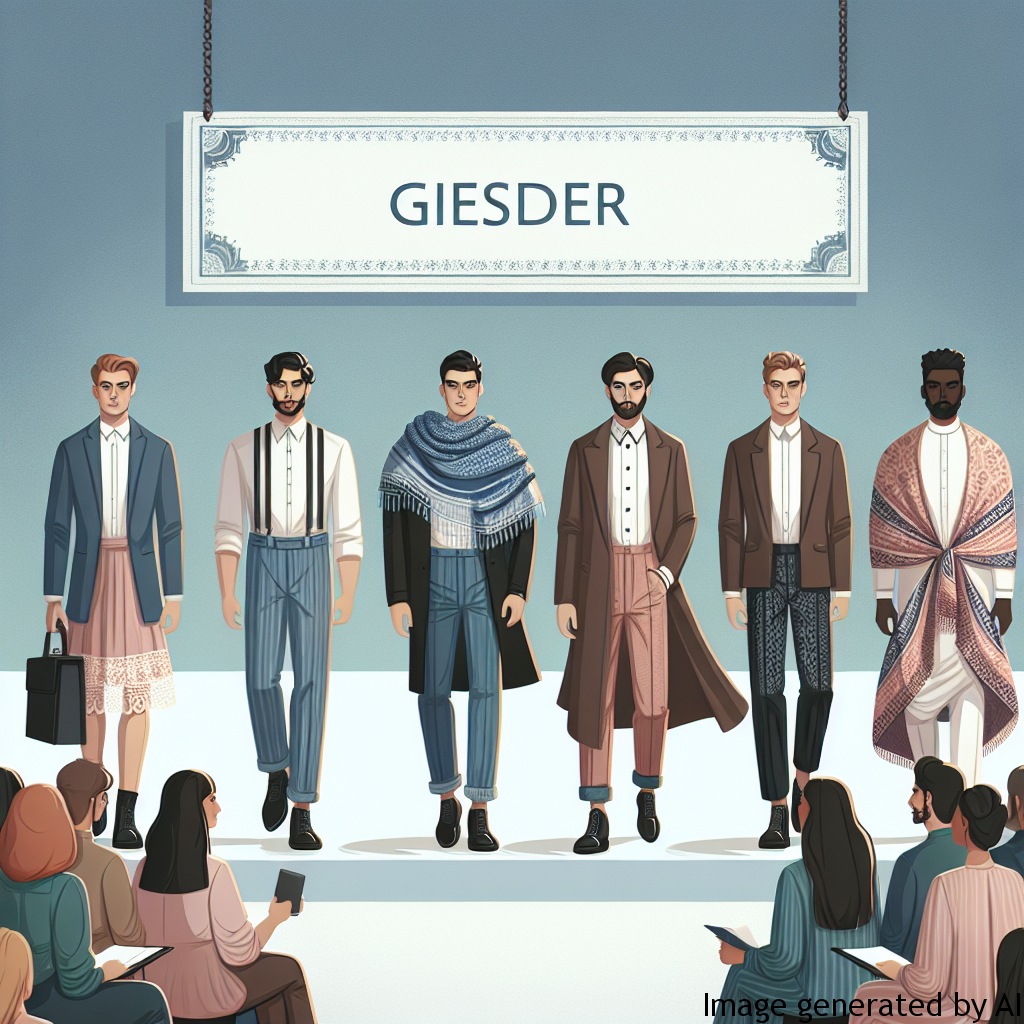Introduction
The concept of gender identity has long been implicated in the world of fashion. While women’s fashion has seen significant strides toward inclusivity and body positivity, men’s fashion and the role of gender identity within it are often overlooked. This article aims to explore how gender identities shape men’s fashion and affect their psychological wellbeing, depicting how societal expectations around male fashion can be both restrictive and liberating.
Description of Gender Expectations and Their Influence on Men’s Psychological Health
Societal Norms and Expectations
Societal norms and gender roles have traditionally dictated that men stick to ‘masculine’ fashion choices. This has led to a limited range of acceptable clothing options for men, building what can be described as ‘gender fashion norms’. These norms can have a profound impact on men’s psychological wellbeing. The cultural pressure to dress in accordance with these conventional masculine standards can lead to feelings of anxiety and dissatisfaction, affecting their self-esteem and sense of identity.
The Link Between Fashion and Self-Expression
Fashion is a form of self-expression, and limiting this expression can stifle individuality. When men feel pressured to conform to stereotypical masculine fashion norms, it can prevent them from expressing their true identities and exploring various facets of their personalities. This suppression can contribute to a variety of mental health issues, including depression and identity confusion.
Examples of How Gender Roles Can Influence Men’s Lives
Men who identify with characteristics typically associated with the opposite gender may feel excluded or marginalized in men’s fashion. For example, a man who prefers wearing vibrant or flamboyant colors may feel anxious or uncomfortable due to the societal expectation of adopting ‘masculine’ fashion choices. Similarly, men who seek out gender-neutral or unconventionally masculine clothing options may face scrutiny or judgment, which can negatively impact their self-esteem and mental health.
Tips for Improving Psychological Health Considering Gender Roles
Breaking free from gender norms in fashion can significantly improve mental health. Men should be encouraged to explore various styles and options without the fear of backlash. Empowering men to embrace their unique fashion preferences can greatly benefit their psychological well-being and self-esteem. Moreover, promoting acceptance and inclusivity in men’s fashion can also help combat mental health issues caused by strict gender fashion norms.
Conclusion
The role of gender identity in men’s fashion cannot be understated. It impacts not only how men present themselves to the world but also their mental health and well-being. As our understanding of gender identity continues to evolve, the fashion industry and society should also adapt, freeing men from stoic fashion expectations and opening up a world of creativity and self-expression. In doing so, we might not only reinvent the way men dress but also improve their psychological health in the process.

